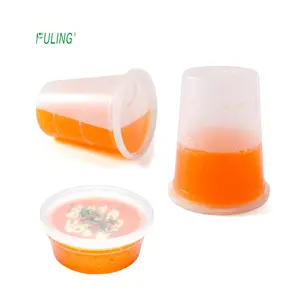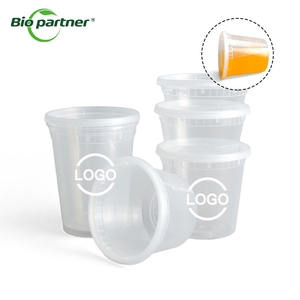In today's fast-paced world, enjoying a hot and comforting bowl of soup on the go has become necessary for many. The key to keeping the soup piping hot and delicious lies in investing in the right soup thermos and containers.
Materials and advantages of soup container
When it comes to soup container, the choice of materials is crucial as it directly influences the insulation capabilities, durability, and environmental impact of the container. Stainless steel stands out as a favored material for soup containers due to its durability and corrosion resistance. This material is robust and retains heat for extended periods, ensuring that the thermos for hot food is optimal. Additionally, stainless steel containers are known for their longevity, making them a reliable choice for those seeking a lasting and high-quality option. Plastic soup cups offer a lightweight and portable alternative with a variety of sizes and styles to choose from. Plastic containers are particularly suitable for those prioritizing convenience and versatility in food storage solutions. Some thermos food jar employ advanced insulation designs, utilizing foam or vacuum-insulated materials to provide exceptional heat retention. These double-layered containers effectively prevent rapid temperature loss, ensuring that soups stay piping hot for an extended duration. This feature is especially beneficial for individuals who require on-the-go solutions or prefer enjoying their soup at a leisurely pace. For those environmentally conscious consumers, there are thermos for hot food made from biodegradable materials such as bamboo or sugarcane fibers. These containers are designed to naturally degrade over time, reducing their impact on the environment. Opting for biodegradable materials aligns with sustainability goals and contributes to a more eco-friendly approach to food packaging.
How to thaw frozen soup in a plastic container?
Thawing frozen soup in a plastic container is a straightforward process that requires careful consideration of food safety. To safely thaw frozen soup in a plastic container, begin by transferring the container from the freezer to the refrigerator. Allow the soup to thaw gradually in the refrigerator, as this controlled method prevents the growth of harmful bacteria. Depending on the soup's density and volume, thawing times may vary, but a general guideline is to allocate several hours or overnight for complete thawing. If people need to expedite the process, be cautious and follow the microwave's approaches to ensure even thawing. Once the soup has melted, it can be reheated on the stovetop or in the microwave, providing a safe and convenient way to enjoy the frozen soup without compromising its quality.
In conclusion, investing in soup thermos and containers is essential for anyone who enjoys a warm and nourishing bowl of soup. Choose the containers that align with personal preferences and make every meal a delightful experience.









































 浙公网安备 33010002000092号
浙公网安备 33010002000092号 浙B2-20120091-4
浙B2-20120091-4